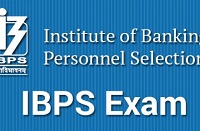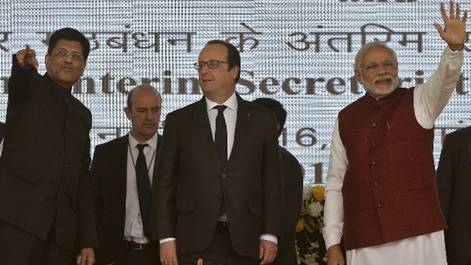Cheque Truncation System – Based on FAQ’s
Want to Become a Bank, Central / State Govt Officer in 2020?
Join the Most awarded Coaching Institute & Get your Dream Job


Now Prepare for Bank, SSC Exams from Home. Join Online Coure @ lowest fee
Lifetime validity Bank Exam Coaching | Bank PO / Clerk Coaching | Bank SO Exam Coaching | All-in-One SSC Exam Coaching | RRB Railway Exam Coaching | TNPSC Exam Coaching | KPSC Exam Coaching
Cheque Truncation System
1. What is Cheque Truncation?
Truncation is the process of stopping the flow of the physical cheque issued by a drawer at some point by the presenting bank en-route to the paying bank branch. In its place an electronic image of the cheque is transmitted to the paying branch through the clearing house, along with relevant information like data on the MICR band, date of presentation, presenting bank, etc. Cheque truncation thus obviates the need to move the physical instruments across bank branches, other than in exceptional circumstances for clearing purposes. This effectively eliminates the associated cost of movement of the physical cheques, reduces the time required for their collection and brings elegance to the entire activity of cheque processing.
2. Why Cheque Truncation in India?
As explained above, Cheque Truncation speeds up the process of collection of cheques resulting in better service to customers, reduces the scope of loss of instruments in transit, lowers the cost of collection of cheques, and removes reconciliation-related and logistics-related problems, thus benefitting the system as a whole.
With the other major products being offered in the form of RTGS and NEFT, the Reserve Bank has created the capability to enable inter-bank and customer payments online and in near-real time. However, cheques continue to be the prominent mode of payments in the country. Reserve Bank of India has therefore decided to focus on improving the efficiency of the cheque clearing cycle. Offering Cheque Truncation System (CTS) is a step in this direction.
In addition to operational efficiency, CTS offers several benefits to banks and customers, including human resource rationalisation, cost effectiveness, business process re-engineering, better service, adoption of latest technology, etc. CTS, thus, has emerged as an important efficiency enhancement initiative undertaken by Reserve Bank in the Payments Systems arena.
3. What is the status of CTS implementation in the country?
CTS has been implemented in New Delhi, Chennai and Mumbai with effect from February 1, 2008, September 24, 2011 and April 27, 2013 respectively. After migration of the entire cheque volume from MICR system to CTS, the traditional MICR-based cheque processing has been discontinued across the country.
4. What is the new approach to CTS implementation in the country?
The new approach envisioned as part of the national roll-out is the grid-based approach. Under this approach the entire cheque volume in the country which was earlier cleared through 66 MICR Cheque Processing locations is consolidated into the three grids in New Delhi, Chennai and Mumbai.
Each grid provides processing and clearing services to all the banks under its respective jurisdiction. Banks, branches and customers based at small / remote locations falling under the jurisdiction of a grid would be benefitted, irrespective of whether there exists at present a formal arrangement for cheque clearing or otherwise. The illustrative jurisdiction of the three grids are indicated below:
New Delhi Grid: National Captial Region of New Delhi, Haryana, Punjab, Uttar Pradesh, Uttarakhand, Bihar, Jharkhand, Rajasthan and the Union Territory of Chandigarh.
Mumbai Grid: Maharashtra, Goa, Gujarat, Madhya Pradesh and Chattisgarh.
Chennai Grid: Andhra Pradesh, Telangana, Karnataka, Kerala, Tamilnadu, Odisha, West Bengal, Assam and the Union Territory of Puducherry.
5. What are the benefits of Grid Based CTS over Speed Clearing to the customer?
Even though Speed clearing hastens the process of cheque collection as compared to outstation cheque collection, it requires the presence of the paying bank branch in the clearing house location. In comparison, grid-based CTS, is a superior system as it encompasses a larger geographical area and the chances of paying bank not having presence in the grid location is seldom.
Under grid-based Cheque Truncation System clearing, all cheques drawn on bank branches falling within in the grid jurisdiction are treated and cleared as local cheques. Cheque collection charges including Speed Clearing Charges should not be levied if the collecting bank and the paying bank are located within the jurisdiction of the same CTS grid even though they are located in different cities.
6. Is it possible to briefly explain the entire process flow in CTS?
In CTS, the presenting bank (or its branch) captures the data (on the MICR band) and the images of a cheque using their Capture System (comprising of a scanner, core banking or other application) which is internal to them, and have to meet the specifications and standards prescribed for data and images.
To ensure security, safety and non-repudiation of data / images, end-to-end Public Key Infrastructure (PKI) has been implemented in CTS. As part of the requirement, the collecting bank (presenting bank) sends the data and captured images duly signed digitally and encrypted to the central processing location (Clearing House) for onward transmission to the paying bank (destination or drawee bank). For the purpose of participation the presenting and paying banks are provided with an interface / gateway called the Clearing House Interface (CHI) that enables them to connect and transmit data and images in a secure and safe manner to the Clearing House (CH).
The Clearing House processes the data, arrives at the settlement figure and routes the images and requisite data to the paying banks. This is called the presentation clearing. The paying banks through their CHIs receive the images and data from the Clearing House for payment processing.
The paying bank’s CHIs also generates the return file for unpaid instruments, if any. The return file / data sent by the paying banks are processed by the Clearing House in the return clearing session in the same way as presentation clearing and return data is provided to the presenting banks for processing.
The clearing cycle is treated as complete once the presentation clearing and the associated return clearing sessions are successfully processed. The entire essence of CTS technology lies in the use of images of cheques (instead of the physical cheques) for payment processing.
7. What type of instruments can be presented for clearing through CTS?
It is preferable to present instruments complying with CTS-2010 standards for clearing through CTS for faster realisation. Instruments not complying with CTS-2010 standards will continue be accepted but will be cleared at less frequent intervals i.e. once a week(every Monday).
8. Will there be any change in the process for the customers?
No. There is no major change in the clearing process for customers. Customers continue to use cheques as at present, except to ensure the use of image-friendly-coloured-inks while writing the cheques. Of course, such of those customers, who are used to receiving the paid instruments (like government departments) would also receive the cheque images. Cheques with alterations in material fields (explained in detail later) are not allowed to be processed under the CTS environment.
9. What are the benefits of CTS to customers of banks?
The benefits are many. With the introduction of imaging and truncation, the physical movement of instruments is stopped. The electronic movement of images can facilitate reduction in the clearing cycles as well. Moreover, there is no fear of loss of instruments in transit. Further, limitations of the existing clearing system in terms of geography or jurisdiction can be removed, thus enabling consolidation and integration of multiple clearing locations managed by different banks with varying service levels into a nation-wide standard clearing system with uniform processes and practices.
Under grid-based Cheque Truncation System clearing, all cheques drawn on bank branches falling within in the grid jurisdiction are treated and cleared as local cheques. No outstation cheque collection charges/Speed Clearing charges to be levied if the collecting bank and the paying bank are located within the jurisdiction of the same CTS grid even though they are located in different cities.
CTS also benefits issuers of cheques. The Corporates if needed can be provided with images of cheques by their bankers for internal requirements, if any.
CTS thus brings elegance to the entire activity of cheque processing and clearing. The benefits from CTS could be summarized as follows –
Shorter clearing cycle
Superior verification and reconciliation process
No geographical restrictions as to jurisdiction
Operational efficiency for banks and customers alike
Reduction in operational risk and risks associated with paper clearing
No collection charges for collection of cheque drawn on a bank located within the grid.
10. What are the benefits of Grid Based CTS to the banking system?
Grid based CTS provides significant cost savings. Consolidation of clearing locations into a few grids minimise the investment in MICR machines and the related AMC costs. Banks will benefit from economies of scale as the grid CTS obviates the need for establishing inward cheque processing infrastructure at various clearing locations. With the merger of many local clearing houses with CTS grids, the settlements which were earlier spread across numerous clearing house locations have been subsumed into a single settlement, thereby significantly reducing the liquidity requirements for the banks.
CTS will also result in other benefits in terms of reduction in the cheque processing fee, reduction in operational overhead, elimination of clearing differences and reconciliation issues etc.
11. If a customer desires to see the physical cheque issued by him for any reason, what are the options available?
Under CTS the physical cheques are retained at the presenting bank and do not move to the paying banks. In case a customer desires, banks can provide images of cheques duly certified/authenticated. In case, however, a customer desires to see / get the physical cheque, it would need to be sourced from the presenting bank, for which a request has to be made to his/her bank. An element of cost / charge may also be involved for the purpose. To meet legal requirements, the presenting banks which truncate the cheques need to preserve the physical instruments for a period of 10 years.
12. How would be the uniqueness of a physical cheque be captured and imparted to the cheque image?
CTS in India mandates the use of prescribed image specifications only. Images that do not meet the specifications are rejected. As the payments are made on the basis of the images, it is essential to ensure the quality of the images. To ensure only images of requisite quality move in the CTS processing cycle, there is a rigorous quality check process at the level of the Capture Systems and the Clearing House Interface (of the presenting bank).
The solution encompasses Image Quality Assessment (IQA) at different levels. The presenting bank is required to perform the IQA during the capture itself. Further IQA is done at the gateway before onward transmission to clearing house. The images are captured with digital signatures of the presenting bank and thereafter transmitted to the paying banks through the Clearing House. Further, the paying banks, if not satisfied with the image quality or for any other reason, can demand for the physical instrument before making payment of the instrument.
Further, the new cheque standard “CTS-2010” prescribes certain mandatory and optional security features to be available on cheques, which will also add to the uniqueness of the images.
13. What are the image specifications in CTS in the Indian context?
Imaging of cheques can be based on various technology options. The cheque images can be Black & White, Gray Scale or Coloured. These have their associated advantages and disadvantages. Black & White images are light in terms of image-size, but do not reveal all the subtle features that are there in the cheques. Coloured images are ideal but increase storage and network bandwidth requirements. Gray Scale images are mid-way. CTS in India use a combination of Gray Scale and Black & White images. There are three images of each cheques that need to be taken – front Gray Scale, front Black & White and back Black & White.
14. How are the images of cheques taken?
Images of cheques are taken using specific scanners. Scanners also function like photo-copiers by reflecting the light passed through a narrow passage on to the document. Tiny sensors measure the reflection from each point along the strip of light. Reflectance measurements of each dot are called a pixel. Images are classified as black and white, gray-scale or colour based on how the pixels are converted into digital values. For getting a gray scale image the pixels are mapped onto a range of gray shades between black and white. The entire image of the original document gets mapped as some shade of gray, lighter or darker, depending on the colour of the source. In the case of black and white images, such mapping is made only to two colours based on the range of values of contrasts. A black and white image is also called a binary image.
15. How the image and data transmitted over the network is secured?
The security, integrity, non-repudiation and authenticity of the data and image transmitted from the presenting bank to the paying bank through Clearing House are ensured using the Public Key Infrastructure (PKI). CTS is compliant to the requirements of the IT Act, 2000. It has been made mandatory for the presenting bank to sign the images and data from the point of origin itself. PKI is used throughout the entire cycle covering capture system, the presenting bank, the clearing house and the paying bank. The PKI standards used are in accordance with the appropriate Indian acts and notifications of Controller of Certifying Authority (CCA).
16. What is Cheque Standardisation and what does CTS 2010 Standard mean?
Standardisation of cheque forms (leaves) in terms of size, MICR band, quality of paper, etc., was one of the key factors that enabled mechanisation of cheque processing. Over a period of time, banks have added a variety of patterns and design of cheque forms to aid segmentation, branding, identification, etc., as also incorporated therein a number of security features to reduce the incidence of cheque misuse, tampering, alterations, etc. Growing use of multi-city and payable-at-par cheques for handling of cheques at any branches of a bank, introduction of Cheque Truncation System (CTS), increasing popularity of Speed Clearing, etc., were a few aspects that led to prescription of certain common minimum security features in cheques printed, issued and handled by banks and customers uniformly across the banking industry.
Accordingly, certain benchmarks towards achieving standardisation of cheques issued by banks across the country have been prescribed like – quality of paper, watermark, bank’s logo in invisible ink, void pantograph, etc., and standardisation of field placements on cheques. In addition, certain desirable features have also been suggested to be implemented by banks based on their need and risk perception.
The set of minimum security features would not only ensure uniformity across all cheque forms issued by banks in the country but also help presenting banks while scrutinising / recognising cheques of paying banks in an image-based processing scenario. The homogeneity in security features is expected to act as a deterrent against cheque frauds, while the standardisation of field placements on cheque forms would enable straight-through-processing by use of optical / image character recognition technology. The benchmark prescriptions are collectively known as “CTS-2010 standard”.
All banks providing cheque facility to their customers have been advised to issue only ‘CTS-2010’ standard cheques. Cheques not complying with CTS-2010 standards will be cleared at less frequent intervals i.e. weekly once from November 1, 2014 onwards.
17. What is the prescription relating to alterations / corrections on cheque forms?
The prescription on prohibiting alterations / corrections on cheques has been introduced to curtail cheque related frauds. No changes / corrections can be carried out on the cheques (other than for date validation purposes, if required). For any change in the payee’s name, courtesy amount (amount in figures) or legal amount (amount in words), fresh cheque leaves should be used by customers. This would help banks in identifying and controlling fraudulent alterations. This prohibition is applicable to cheques cleared under the image based Cheque Truncation System (CTS) only. It is not applicable to cheques cleared under physical exchange of instruments.
18. What are the precautions required to be taken by the banks / customers to avoid frauds?
Banks / Customers should use “CTS 2010” cheques which are not only image friendly but also have more security features. Customers may request/insist their banks for cheque forms that are compliant with the “CTS 2010” standard. They should preferably use image-friendly coloured inks while writing cheques and avoid any alterations / corrections thereon. Preferably, a new cheque leaf may be used in the event of any alterations / corrections as the cheque may be cleared through image based clearing system.
Banks should exercise care while affixing stamps on the cheque forms, so that it does not interfere with the material portions such as date, payee’s name, amount and signature. The use of rubber stamps, etc, should not overshadow the clear appearance of these basic features in image. It is necessary to ensure that all essential elements of a cheque are captured in an image during the scanning process and banks / customers have to exercise appropriate care in this regard.





